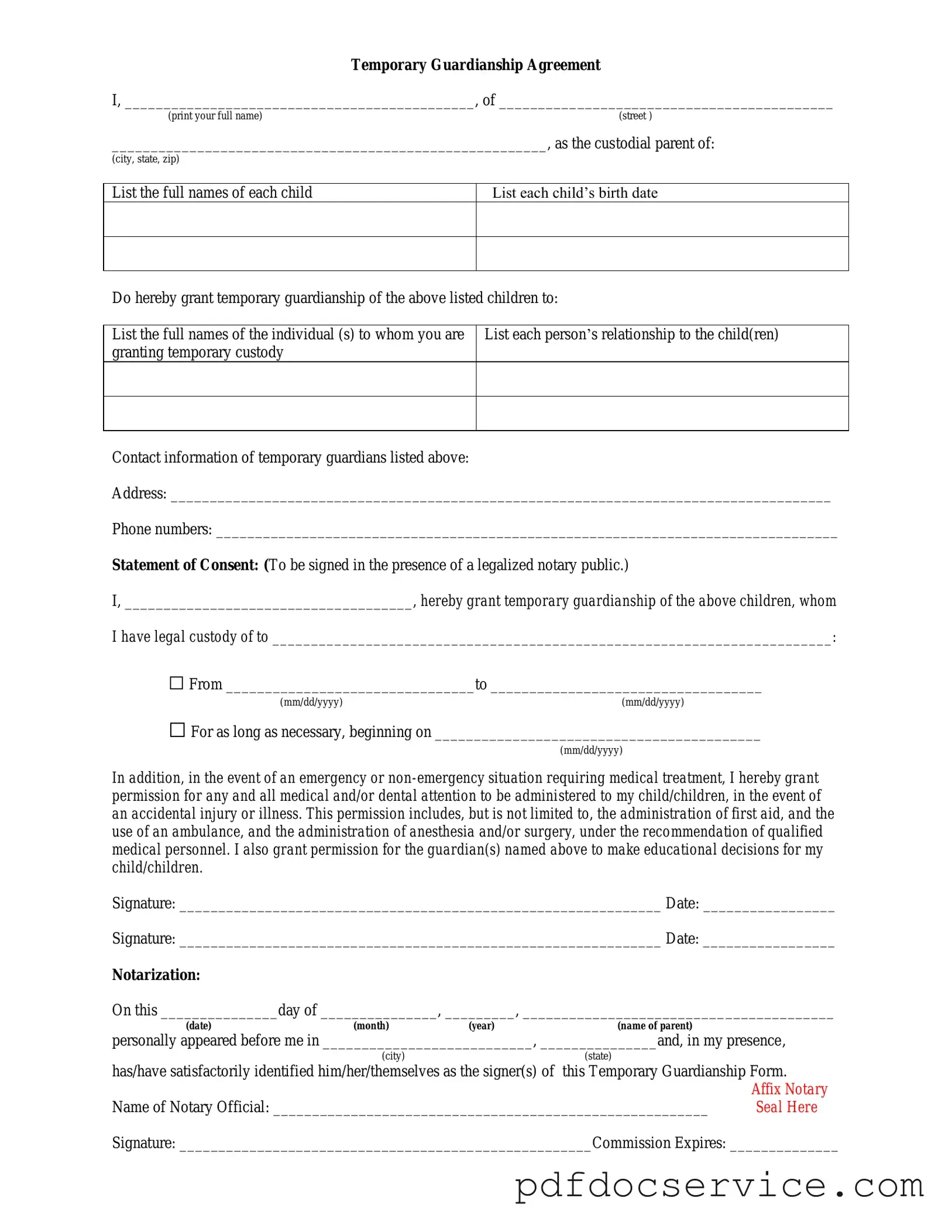A Temporary Custody form is a legal document that allows a parent or guardian to request temporary custody of a child. This form is typically used in situations where the primary caregiver is unable to provide care for the child due to various reasons, such as illness, absence, or other emergencies. The form outlines the reasons for the request and provides necessary information about the child and the proposed temporary custodian.
Who can file for Temporary Custody?
Generally, any parent or legal guardian can file for Temporary Custody. Additionally, other relatives or individuals with a significant relationship to the child may also be eligible to request temporary custody. This includes grandparents, aunts, uncles, or close family friends. The court will consider the best interests of the child when deciding who may be granted temporary custody.
When filling out the Temporary Custody form, you will need to provide several key pieces of information, including:
-
The full name and date of birth of the child.
-
Your relationship to the child.
-
Details about the current living situation of the child.
-
The reasons for requesting temporary custody.
-
Information about the proposed temporary custodian, if different from the applicant.
It's important to be thorough and accurate in your responses to ensure the court has all the information needed to make an informed decision.
How does the court decide on a Temporary Custody request?
The court's primary concern is the well-being and best interests of the child. When reviewing a Temporary Custody request, the judge will consider various factors, including:
-
The child's current living situation and stability.
-
The reasons for the request and any supporting evidence.
-
The relationship between the child and the proposed temporary custodian.
-
The child's preferences, if they are of sufficient age and maturity.
Ultimately, the court aims to ensure that the child is placed in a safe and nurturing environment during the temporary custody period.
What happens after the Temporary Custody is granted?
Once the court grants Temporary Custody, the temporary custodian will have the legal authority to make decisions regarding the child's care, education, and welfare. This arrangement is typically for a specified period, and the court may set a date for a review hearing. It is essential for the temporary custodian to keep the child's best interests in mind and maintain open communication with the child's parents or guardians. If circumstances change, either party may petition the court to modify or terminate the temporary custody arrangement.
